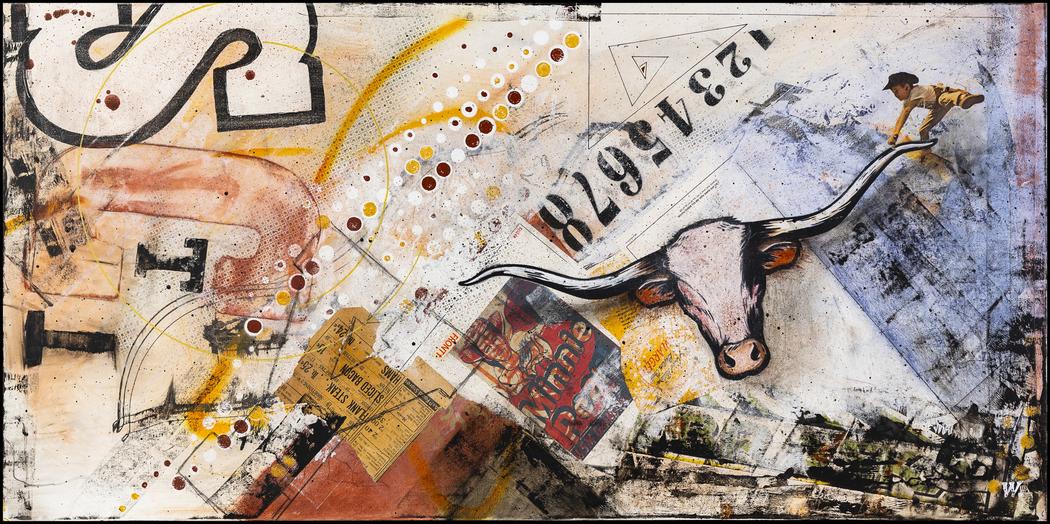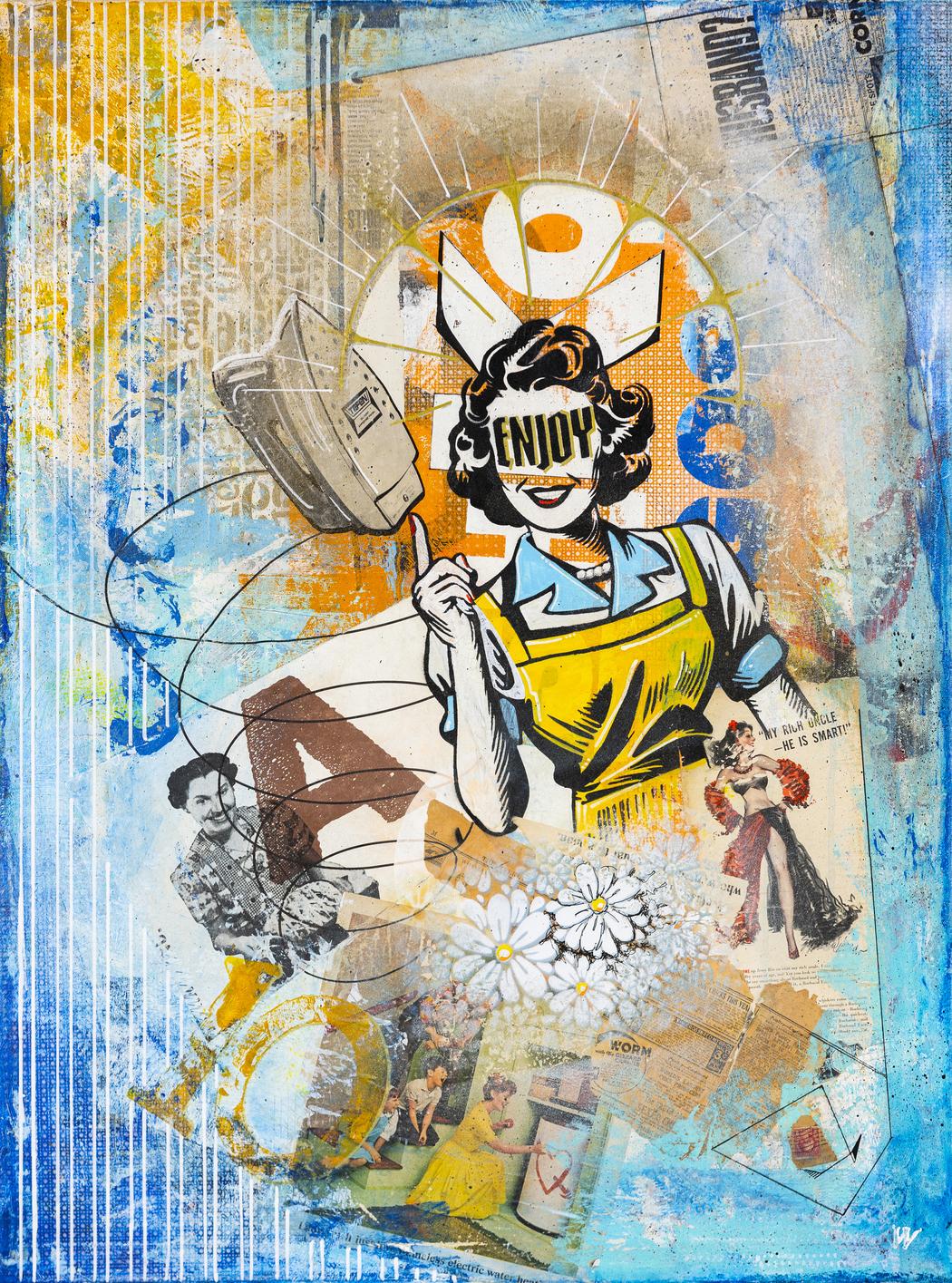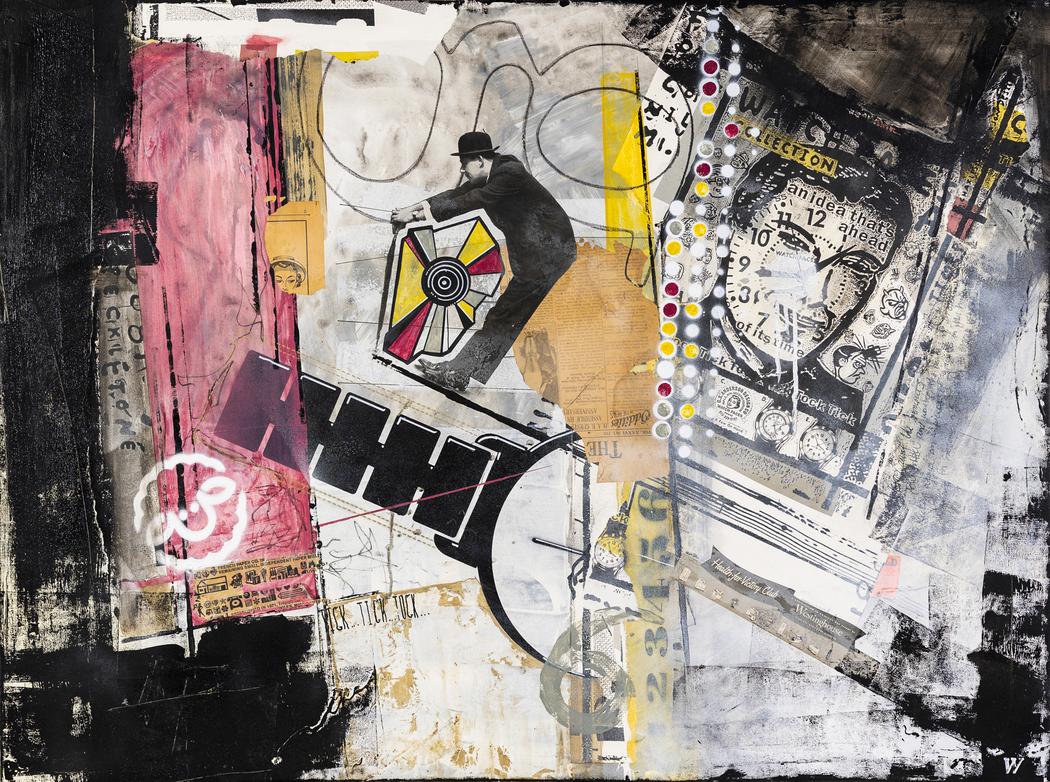Kelly Waggoner
Your artistic journey began very young. What do you think kept that spark alive from childhood into your professional life?
From a very young age, creativity just felt like part of my DNA and was supported by my parents. Throughout high school, I knew I wanted to own and run an advertising agency. That ambition led me to the University of Nebraska at Kearney, which had one of the Midwest’s top graphic design programs. It was a competitive environment, but I thrived there, soaking up everything I could, especially when it came to typography, which quickly became a passion.
This was the early 1990s, right as computers were starting to transform graphic design. I taught myself QuarkXPress and Photoshop, knowing those skills would be essential in the real world. That sense of learning and adapting kept things exciting and pushed me forward.
Whenever I felt creatively unfulfilled, I’d find other outlets, like building things around the house, my fireplace surround or the desk I still use. For me, keeping the spark alive was never a conscious effort. Creativity is just who I am. No matter what form it takes, I’ll always find a way to express it.

You mentioned a powerful moment when your first oil painting sold while still unfinished. How did that experience shape your confidence and relationship with art?
That moment was both an honor and a turning point for me. Up until then, most of my encouragement came from family. But having someone outside my circle see value in my work, especially when it wasn’t even finished, was a whole new kind of validation. I think every artist, at some point, craves that external recognition.
That early sale opened my eyes to the idea that art could be more than just a personal passion—it could connect with others and even become a business. It motivated me to keep pushing myself, to improve my creative skills, and to take my art more seriously.

You built a successful career in advertising. How has your background in branding and communication influenced the visual language in your paintings?
My background in advertising and branding is woven into every aspect of my mixed media work. Years spent crafting visual messages for clients taught me the power of storytelling through imagery, and that instinct naturally carries over into my paintings. I’m always searching for a sense of balance and harmony, skills honed from years of designing layouts and building brand identities.
You can see my graphic design tendencies in the way I compose each piece: the use of bold shapes, thoughtful typography, and layered elements all serve a purpose, guiding the viewer’s eye and reinforcing the narrative. Even when I’m working abstractly, I’m conscious of how every element communicates, whether it’s through color, texture, or composition. Ultimately, my goal is to create work that not only captures attention but also invites deeper engagement, just as effective branding does.

What inspired your transition from realistic wildlife art into bold abstraction and mixed media?
For as long as I can remember, I’ve been drawn to abstract art, but for much of my early life, I found myself too bound by structure to truly embrace it. My background in graphic design made me comfortable with grids, order, and precise composition, the idea of letting go and painting abstractly felt almost impossible. I simply couldn’t break free from those self-imposed constraints.
After college, I stepped away from painting for almost 30 years. Then, during the COVID lockdowns, a time when I was facing significant emotional challenges, an abstract artist friend encouraged me to pick up the brush again. At first, it was purely therapeutic: I started by moving paint around the canvas with no agenda, no concern for composition, and no pressure to create something recognizable. It was about relearning techniques and, more importantly, giving myself permission to let go.
In that process, I realized I wasn’t interested in returning to wildlife or landscape painting. I no longer wanted to paint what others wanted me to paint. What I needed was the freedom to explore, to express emotion without boundaries, and to use art as a form of release. That’s what led me to bold abstraction and mixed media, where I could finally break away from the rigid structure and allow intuition and feeling to guide my work.
You explore social themes — such as immigration or cultural identity — in some of your work. What role do you believe art plays in today’s conversations about society?
Art has a way of reaching people emotionally and visually that words alone often can’t. It can challenge assumptions, and invite viewers to see issues from a new perspective.
In today’s world, where so much communication is fast and surface-level, I think art’s ability to slow us down and invite deeper discussion is more important than ever.

When working with collage elements and found media, do you start with a clear message — or does meaning emerge later through experimentation?
Sometimes I begin with a clear concept or message in mind, but more often than not, the process itself takes over. The materials, textures, and unexpected combinations start to suggest new directions, and the piece develops its own voice and story as I go.
I’ve learned to trust that sense of discovery. Even when I set out with a plan, I try to stay open to what emerges through experimentation. Often, the most authentic meaning comes from allowing the work to evolve organically, responding to what’s happening on the canvas rather than forcing it to fit a predetermined idea.

What emotions or ideas do you hope viewers experience when standing in front of your work?
Honestly, my paintings are my voice, my way of processing and expressing what I’m feeling or experiencing. Each piece is a window into my story, my emotions, my opinions and my struggles. When someone stands in front of my work, I hope they sense that vulnerability and honesty. I also hope it sparks something in others, maybe a memory, an emotion, or a question about their own experiences or beliefs.


Leave a Reply